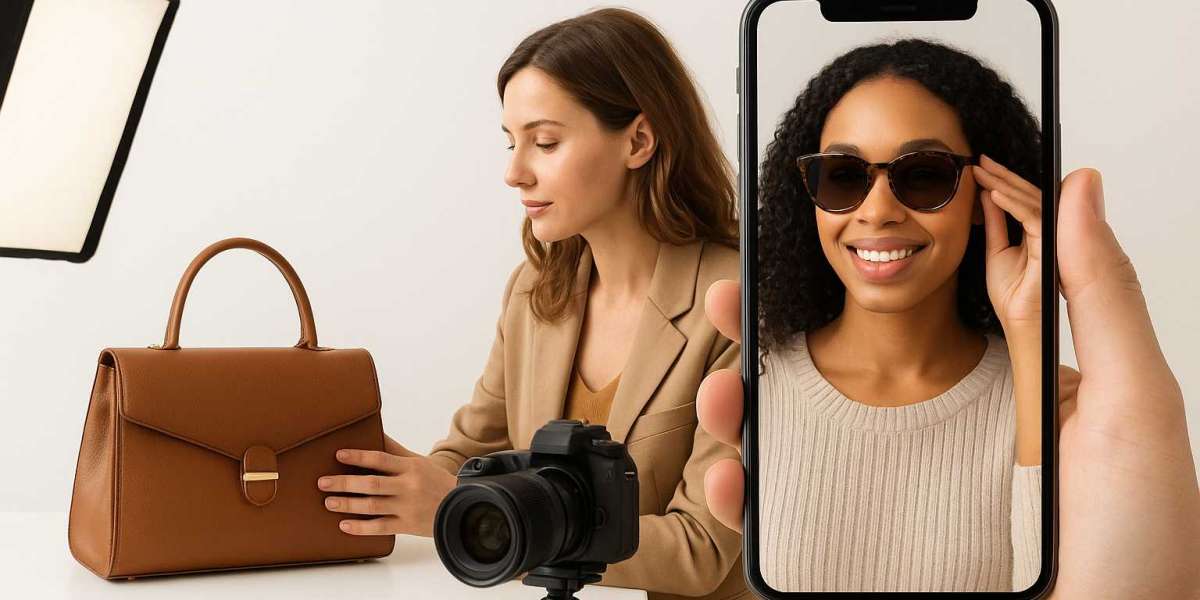Online shopping is built on visuals. When customers can’t touch, try, or test products, the only way they judge them is through images. That’s why e commerce photography is one of the most powerful tools for driving conversions and building trust in digital retail.
Whether you’re selling fashion, electronics, or home décor, high-quality product photos are no longer optional—they are essential. Done right, they showcase products accurately, highlight details, and create an emotional connection that encourages purchases.
What is E-Commerce Photography?
E-commerce photography refers to the process of capturing professional product images specifically for online stores, marketplaces, and digital advertising. Unlike casual snapshots, these photos are carefully planned to highlight clarity, accuracy, and appeal.
Most businesses use e-commerce photography across platforms like:
Shopify or WooCommerce websites
Amazon and eBay product listings
Social media ads and catalogs
Email marketing campaigns
The goal is simple: to make products look as appealing and trustworthy as possible to online shoppers.
Why E-Commerce Photography Matters
Shoppers can’t hold products in their hands when browsing online, so images do the heavy lifting. Here’s why strong visuals make such an impact:
Trust and Credibility: Clear photos reduce uncertainty and build confidence in your store.
Higher Conversions: Studies show that shoppers are more likely to buy when listings include professional images.
Lower Returns: Detailed photos help customers understand what they’re getting, reducing misunderstandings.
Brand Identity: Consistent style across your product images strengthens your brand’s presence.
Without high-quality images, even the best products struggle to sell.
Types of E-Commerce Photography
Different product categories and sales channels call for different photography styles. Here are the most common:
Product-Only Shots
Simple, clean images on a plain background (usually white). These are ideal for Amazon or Google Shopping, where clarity and focus matter most.
Lifestyle Photography
Shows products in real-world settings. For example, furniture staged in a living room helps customers imagine how it fits into their homes.
Detailed and Close-Up Shots
Highlight textures, stitching, or product features. Perfect for jewelry, apparel, or technology.
360-Degree or Interactive Photography
Allows customers to rotate and view the product from every angle, simulating an in-person experience.
E-Commerce Photography and AI Tools
With digital tools evolving, many businesses are exploring ways to enhance product imagery through artificial intelligence. One trend gaining attention is the AI image generator from text.
How an AI Image Generator from Text Works
This tool creates visuals based on written prompts. For example, typing “a pair of running shoes on a wooden table with soft lighting” can generate a styled image in seconds.
Benefits of Using an AI Image Generator from Text
Speed: Ideal for producing marketing visuals quickly.
Cost-Effective: Reduces the need for extensive photoshoots for conceptual images.
Creative Freedom: Helps create mockups, ad variations, or lifestyle concepts without props or models.
Limitations of AI-Generated Images
While an AI image generator from text is useful for marketing creativity, it’s not always practical for core e-commerce listings. AI images may lack accuracy, and shoppers expect to see real photos of the product before purchasing. Platforms like Amazon also require authentic product photography to comply with listing policies.
Balancing Professional Photography with AI Tools
The best strategy is to use both approaches wisely. Professional e-commerce photography should remain the foundation for product listings because it ensures accuracy, consistency, and credibility. At the same time, businesses can use an AI image generator from text for supplementary purposes like ad campaigns, lifestyle concepts, or social media content.
This hybrid approach saves time and cost while keeping the integrity of the online shopping experience intact.
How to Get Started with E-Commerce Photography
If you’re new to professional product images, here’s how to start:
Plan Your Style: Decide whether you want minimal white backgrounds, lifestyle settings, or both.
Invest in Lighting: Natural or studio lighting ensures products look realistic and appealing.
Use Quality Equipment: A DSLR or mirrorless camera with a tripod ensures sharpness and detail.
Consistency is Key: Keep background, angles, and editing uniform across your store.
Don’t Skip Editing: Post-production polishing ensures images look crisp and professional.
For businesses that want a faster solution, hiring experienced photographers ensures you get polished results without trial and error.
Final Thoughts
E-commerce photography isn’t just about making products look good—it’s about driving trust, boosting conversions, and reducing returns. While new tools like the AI image generator from text open exciting possibilities for creative visuals, they should be seen as a supplement, not a replacement, for authentic product photography.
In today’s competitive online marketplace, investing in professional product images isn’t just smart—it’s essential.







